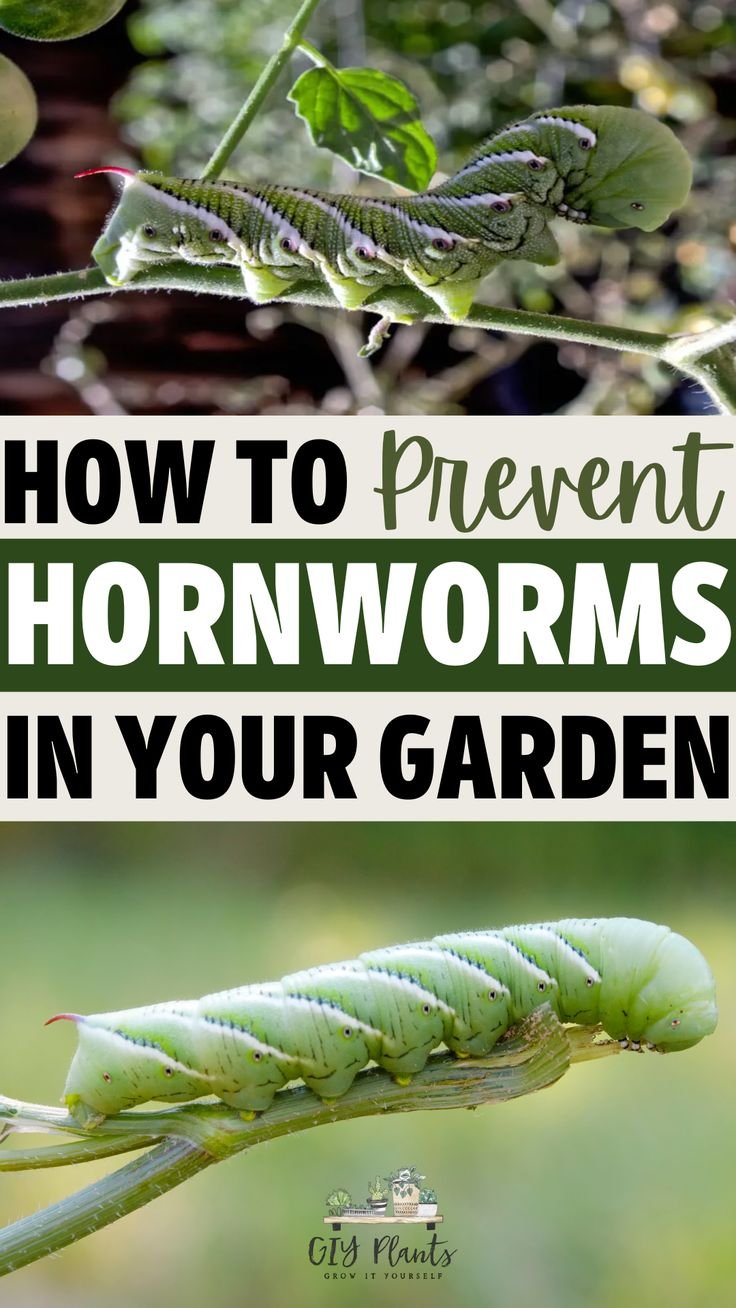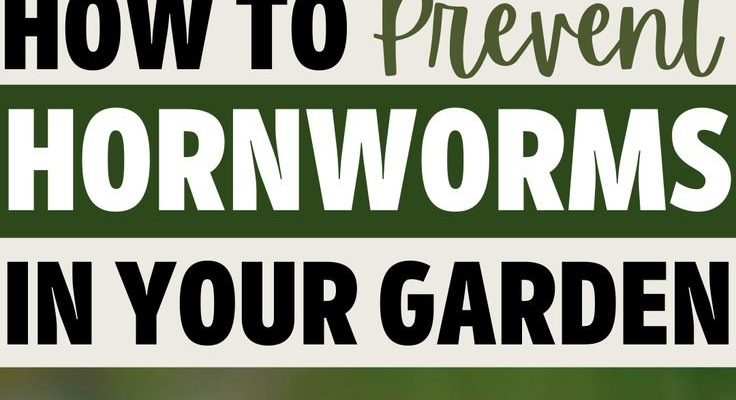
Picture this: you’ve just planted a beautiful vegetable garden, and everything is thriving. But then, out of nowhere, you notice some leaves turning yellow or disappearing entirely. These sneaky little caterpillars can blend in so well with the foliage that you might not even see them until it’s too late. But fear not! Preparing for hornworm season is all about being proactive. With a bit of awareness and some smart strategies, you can protect your plants and enjoy a bountiful harvest.
What Are Hornworms and Why Are They a Problem?
Hornworms are the larvae of moths, particularly the Five-spotted Hawkmoth and the Tobacco Hornworm moth. They’re large, often reaching up to four inches long, and can be green or brown. Here’s the kicker: they can devour leaves at an astonishing rate. You might find an entire tomato plant stripped bare in just a few days! Since they’re voracious eaters, you might be wondering, “Why should I care?” Well, aside from the obvious damage they can cause, hornworms can also attract other pests, turning your garden into a buffet for even more unwanted guests.
Understanding their life cycle can help you prepare better. Hornworms generally hatch in late spring to early summer, when temperatures rise. That means it’s important to start scouting your garden early in the season. You wouldn’t want to wait until you see the damage to act. Keeping an eye out for these pests early on is like having a cheat sheet for your garden’s success.
Signs of a Hornworm Infestation
Knowing what to look for is crucial in the battle against hornworms. **First**, inspect your plants regularly, focusing on the undersides of leaves. Hornworms camouflage themselves well, but you might notice small holes in the leaves, which is a telltale sign. **Second**, look for frass, which is basically hornworm poop. It’s usually dark green or black and can be found under infested plants. **Lastly**, if you’re lucky enough to catch them in action, you’ll see these little monsters munching away.
Taking note of these signs early can make a huge difference. Imagine checking your garden and spotting a hornworm before it has a chance to hatch a whole army. That’s your victory! Once you spot a hornworm, it’s time to take action before more damage occurs.
Creating a Prevention Plan
Just like you might create a workout regimen or meal plan, having a prevention plan for hornworms is essential. **Start by planting resistant varieties** of tomatoes and peppers if you have the option. Certain plants are less appealing to hornworms. This tactic alone can significantly reduce their chances of invading your garden.
**Next, consider companion planting**. This method involves planting certain plants together that can help each other thrive while repelling pests. For instance, marigolds are known to deter hornworms and other pests. Incorporating them into your garden isn’t just beautiful; it’s smart gardening.
**Finally**, don’t forget about early pest detection. Setting up traps or using organic pesticides can help keep the hornworms at bay before they become a problem. After all, an ounce of prevention is worth a pound of cure, right?
Hand-Picking and Monitoring
If you want to go old-school in your approach to managing hornworms, hand-picking is surprisingly effective. It’s a simple technique—just put on some gloves and inspect your plants regularly. You might feel a little gross at first (those little guys can be quite squishy), but it’s a method that works. Just be sure to check the undersides of leaves, where these pests typically hide.
You may also want to keep a close eye on your plants during peak hornworm season, which is often in late summer. That’s when these caterpillars are most likely to appear. **Make it a weekly ritual**, maybe even invite a friend to join you. It can turn a mundane task into a fun garden date.
While this method requires some effort, it’s rewarding to see the results. Nothing feels better than knowing you’ve actively protected your garden against these little devils!
Using Natural Predators
Did you know that nature has its own set of pest control agents? Birds, such as blue jays and wrens, absolutely love snacking on hornworms. You can attract these feathered friends to your garden by installing birdhouses and bird feeders. Think of it as an ecosystem strategy: you feed them, and they take care of your garden’s pests.
You can also consider introducing beneficial insects like parasitic wasps. These tiny wasps lay their eggs inside hornworms, and when the eggs hatch, the larvae feed on the hornworm itself. It might sound a bit gruesome, but it’s a natural way to keep those pests from munching on your crops.
By embracing these natural predators, not only do you help reduce the hornworm population, but you also enhance your garden’s biodiversity. Plus, it’s a fun way to engage with local wildlife!
Choosing Organic Pesticides
If you’re encountering a significant hornworm problem, and hand-picking isn’t cutting it, you might want to explore organic pesticides. These options are often derived from natural sources and can effectively help manage hornworms while being safer for the environment.
One popular choice is **Bt (Bacillus thuringiensis)**, a bacteria that targets caterpillars but is harmless to humans, pets, and pollinators. You can find it at most garden centers or online. Just mix it with water according to the package instructions and spray it on your plants.
Always remember to apply these products in the evening or early morning when pollinators are less active. This helps reduce the risk of harming beneficial insects while effectively targeting the hornworms.
When using any pesticide—organic or not—make sure to follow the instructions carefully. Applying too much can harm your plants or the surrounding ecosystem, which is the opposite of what you want!
Regularly Inspecting Your Garden
Consistent garden inspection is your best defense against hornworms. Make it part of your gardening routine—like watering or pruning. Set aside some time each week to stroll through your garden and give it a thorough check.
During inspections, be sure to look for any signs of distress in your plants. Yellowing leaves or wilting could indicate not just hornworms, but other diseases or pests too. You might even discover beneficial insects that are already at work, helping to keep your garden healthy.
By regularly inspecting your garden, you’re not just fighting hornworms; you’re also developing a deeper connection with your plants. You’ll become familiar with their needs, and you might even spot other issues before they escalate.
Final Thoughts on Preparing for Hornworm Season
Preparing for hornworm season doesn’t have to be a daunting task. With the right tools, techniques, and a little bit of vigilance, you can enjoy a thriving garden free from these pesky pests. Think of yourself as the guardian of your garden, always on the lookout for potential threats.
By understanding hornworms, implementing preventive measures, and keeping a close eye on your plants, you’re setting yourself up for success. So grab your gloves, check your plants, and get ready to enjoy a bountiful harvest—all while keeping those sneaky hornworms at bay!

